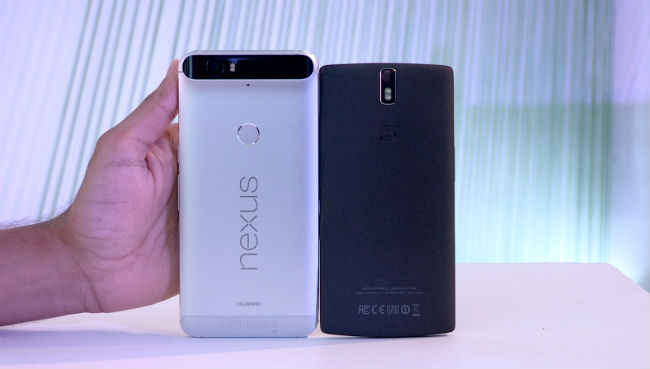Huawei Nexus 6P: Full Review
When I first saw the initial leaks of the Nexus 6P, I was unimpressed and almost entirely set on getting the 5X as my next device. That was true, at least, until Google announced the prices and specs of these phones. The Nexus 6P is a much better bang for your buck, and I'd consider it the best possible smartphone on the market right now.
The fingerprint sensor, called Nexus Imprint, is insanely fast and accurate. Having it on the back may be an interesting change for people who are used to having it on the home button like Apple and Samsung, but personally, I like it on the back better. My finger naturally reaches it when I pick it out of my pocket and a lot of the time it's already unlocked when I bring it up to my face. To unlock from a tap of the fingerprint sensor, it takes just around one second. I timed it. When it is unlocked it directly goes past the lock screen, which is really handy.
The front facing speakers are another high point I thought I'd never use. I'm really used to using headphones all the time, but a few days ago I sure was glad I had these speakers when my friends asked someone to play some music and I knew my phone could produce the best and loudest sound.
The camera may not have the most megapixels, having a modest 12.3. But it does definitely get the job done by having a much larger pixel than other phones. When the pixels the camera takes are larger, this means it can let more light in. The result is better low-light pictures and all pictures are more vibrant. This is the best phone camera I've ever owned.
...
The metal body feels incredibly premium. I have absolutely no complaints there. I chose to get the graphite model, and my only complaint about it is that the black sort of hides the diamond cut edges of it. In pictures, the aluminium model looks much nicer there. The reason I chose to get the graphite version instead of any other color is because I thought it would look better with a dbrand skin. I feel like a skin or case is required with this phone, because the metal is fairly thin and dents easily. That combined with the slippery surface makes for a bad combination for drops.
The battery definitely gets the job done. Whether it's better or worse than my OnePlus One which was famous for its great battery life, I cannot say. It definitely gets me through the day with at least 4 hours of screen-on time. I've only had one issue with the battery life, and that was caused by a Google Play services bug which caused it to keep my device awake. Weird, but not unheard of. A reinstallation of Play services fixed the issue. Marshmallow's Doze and App Standby features can result in completely flat lines of battery usage over hours of non-use.
I don't know whether it's Marshmallow, the phone, or a combination of the two, but the 6P is incredibly fast and smooth. I've never used a phone this fast before. Marshmallow's added animation refines what Lollipop set out to do and makes the experience much smoother. When I first got the phone I ran a quick AnTuTu benchmark, with the 6P earning 70924. While that isn't the best ranking around, it sure stacks up to the competition.
I'm incredibly happy with this phone, and I have to say, the fact that it's a Nexus is the best thing about it. I didn't get Nexus Protect, but the ability to have your phone protected for 2 accidental drops is incredibly comforting for those who do. One week after I purchased my 6P, the price dropped $50 on the Google Store. I wasn't worried, because I knew Google Nexus had a famous reputation for keeping their customers happy. From giving price change refunds to repairing Nexus 5 screens for free, Nexus has had a long history of great customer service. Sure enough, one five minute online chat with customer support resulted in $50 being refunded. I didn't have to do anything except message them. They even wished me a merry Christmas! If only every company could be this good to their customers.
Overall, I give the Huawei Nexus 6P a 10/10. There isn't much wrong with this phone. Newest possible clean software, well sufficient specifications, nifty features such as the fingerprint sensor, and the Nexus brand makes this a phone anyone would love to have. It's a pleasant experience for both the techie and the common buyer. If you're looking for a new phone, definitely consider the Nexus 6P, which is now $50 off on the Google Store!











